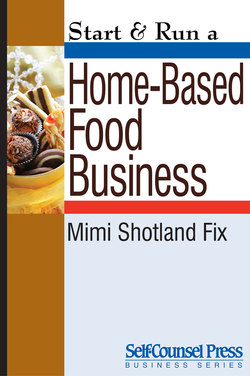Читать книгу Start & Run a Home-Based Food Business - Mimi Shotland Fix - Страница 35
На сайте Литреса книга снята с продажи.
8. Researching the Market
ОглавлениеBefore you can decide on a product, you may need to do market research. Market research is a logical, objective, and thorough method of collecting data to analyze your target market. It’s used to understand your competition and your business potential. In other words, you need to research what people are buying and find potential products that would be a good fit for your market.
Your market research should cover a variety of stores, farmers’ markets, and online vendors. Keep a small notebook handy as you visit these places. Watch what people are buying and eating. Look at the pricing and packaging. You will need to answer the following questions:
• How much do these items cost?
• What kinds of labels are used?
• Does the packaging enhance or detract from the product?
Remember to take notes or use a recording device so you don’t forget the details. Don’t worry about the store manager seeing you. If a clerk asks if you need help, mumble that you need time to look for a gift. Purchase anything that looks intriguing or that you can learn from. When I do market research I always buy a product if I want to taste the flavor, understand the texture, or want to thoroughly inspect the label and package.
Do a web search and bookmark sites that have interesting or helpful information. Look through newspapers and magazines for articles and advertisements. Pick up menus, flyers, and brochures; keep them in a central place for easy reference, such as in a file folder or desk drawer. Keep copies of the information you find. Later, when you’re ready to design a flyer or brochure, you’ll have samples from area businesses from which to draw ideas.
Ask people for feedback when they sample your products, but be aware that the information you gather might not be truthful. Rely on your eyes and instinct, and watch people when they give you their opinions. For whatever reason, maybe it’s just human nature, but people often tell you what they think you want to hear. If possible, seek individuals whose opinions you trust and who will be honest with you.
Trade magazines are another source of valuable information. These magazines are sometimes free to customers who own a business, or are about to start a business. Baking Buyer and Modern Baking keep track of trends, have great ideas, and provide supplier ads with websites and toll-free phone numbers for requesting additional information. Over the years I’ve found industry suppliers to be exceptionally helpful in my market research.
Having a great recipe or choosing a trendy category of food does not give you a guaranteed best-selling item. Customers can be fickle, times can change, and cupcakes can follow croissants into oblivion. Always stay current with the newest trends.
Pumpkin Loaf
Yield: 3 medium (7 x 3) loaves
• 3 cups sugar
• 1 cup vegetable oil
• 4 large eggs
• 1 (15–16 oz) can pumpkin
• 2/3 cup water, cider, juice, or wine
• 3 1/2 cups all-purpose flour
• 2 teaspoons baking soda
• 1 1/2 teaspoons salt
• 2 teaspoons cinnamon
• 1 teaspoon nutmeg
• 1/2 teaspoon allspice
• Optional: 1 cup raisins
Preheat oven to 350°F and grease 3 medium (7 x 3) loaf pans.
In a large bowl, mix together the sugar, oil, eggs, pumpkin, and liquid.
In a 4-cup measure, lightly spoon in the flour then add the baking soda, salt, and spices. Stir, then add to the liquid ingredients and mix thoroughly. Add raisins, if using.
Spoon this thin batter into your pans and bake 35 to 50 minutes, until the tops are firm to the touch and leave no finger imprint.
Cool before wrapping. These keep for one week at room temperature, three weeks in the fridge, and six months frozen.
Also makes excellent muffins.
